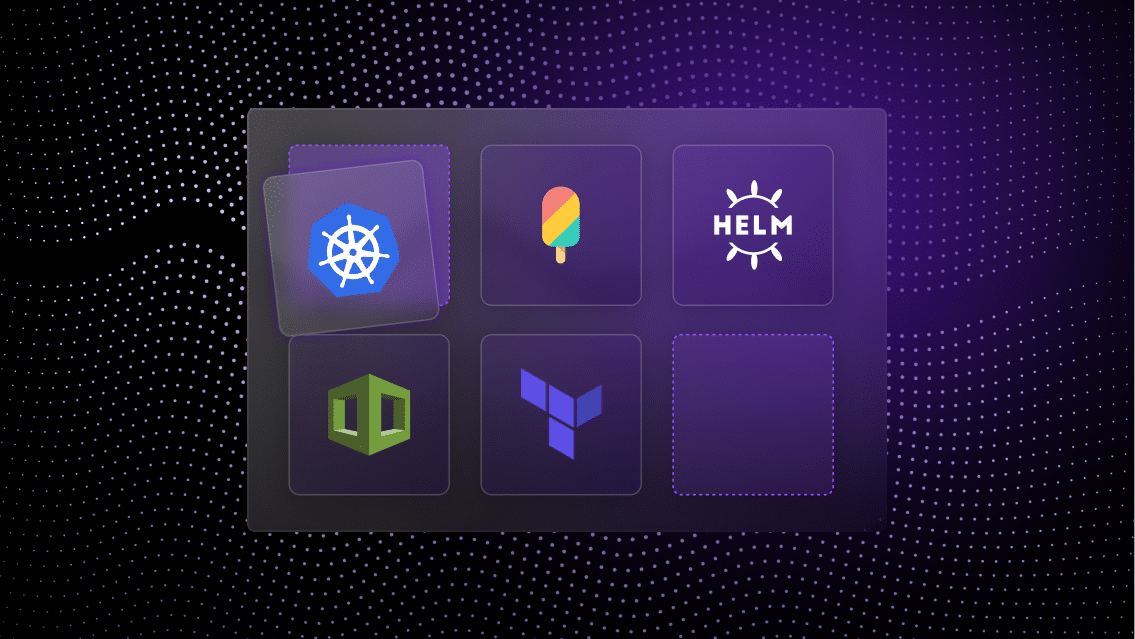For years, Cisco DevNet has provided the global community of Cisco developers the resources they need to support the successful deployment of Cisco products and services.
Cisco DevNet Sandboxes are fundamental to this mission. As a public-facing resource, the Cisco DevNet Sandbox experience eliminates a significant barrier that developers of all types are familiar with—access to environments where they can run their code.
For example, to run a sandbox environment delivering all information to explore APIs and develop services for Cisco’s Network Services Orchestrator, a developer can find it on Cisco DevNet’s self-service Sandbox catalog and launch it in a matter of minutes.
The catalog provides on-demand access to application resources that all developers need to get their work done, but which would otherwise require manual orchestration to deliver.
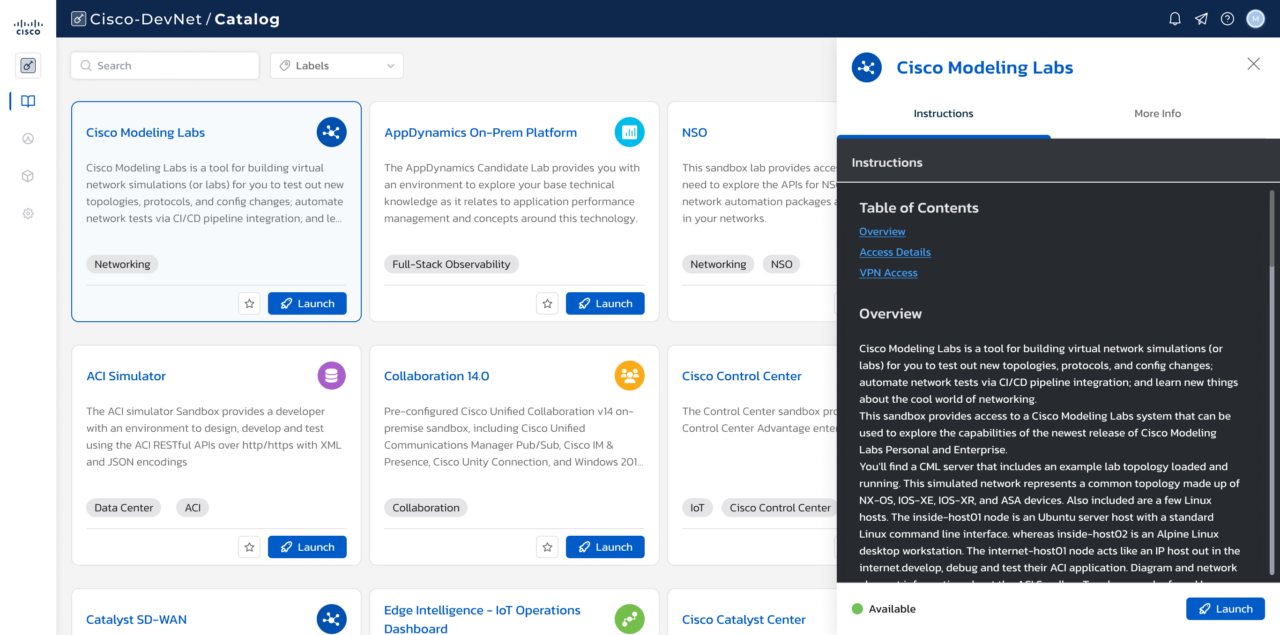
In essence, the Cisco DevNet team built its sandbox experience as a platform for its global community of developers to access the resources they need to build applications.
This week, at Cisco Live Amsterdam 2024, the Quali team joined the Cisco DevNet team for a session providing a deep dive on optimizing the user experience of the Sandbox platform.
Here are some takeaways from the session.
Scaling management & performance for a global community of developers
In 2023, the Cisco DevNet team wanted to find ways to better support sandbox users at scale.
Developer experience is the foundation of the value that Cisco DevNet sandboxes provide—any friction in the ability to access application services will diminish that experience and hold back overall innovation among the Cisco developer community.
To maintain this experience, the Cisco DevNet team would need to provide a service that scales with user growth while minimizing disruptions.
Using Quali Torque’s platform as the foundation for the Sandbox experience, the Cisco DevNet team leveraged modern platform engineering principles to scale self-service access to application infrastructure while gaining visibility into how that infrastructure is used.
Designing developer experience for a global community
With such a diverse range of developers supporting a vast ecosystem of products, the Cisco DevNet team needs to anticipate and cater to the most common needs for DevNet users.
Visiting the new Cisco DevNet Sandbox catalog, users can search for specific sandboxes by name and filter their view based on labels for use case. For example, filtering on those labeled “Cloud” will display only sandboxes that were developed for cloud workloads.
Each catalog item provides all information on the infrastructure and orchestration of the sandbox as well as instructions on its use that developers can view prior to launching it.
Additionally, developers can view operational information relating to that sandbox—how long the sandbox will take to launch, the last time it was deployed, and the maximum runtime allowed for developers running it.
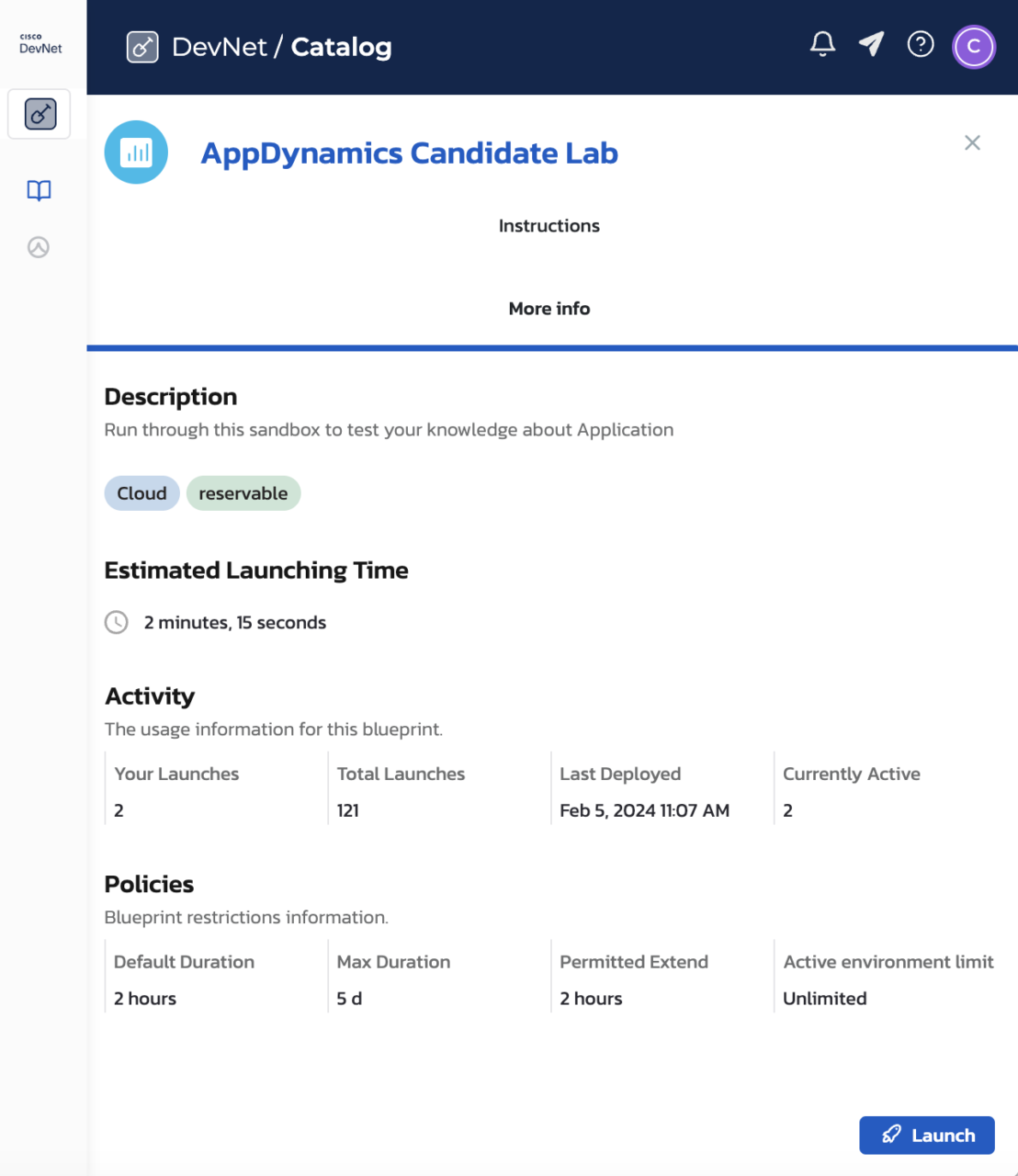
Users can then set their own custom durations when launching each sandbox. Setting a duration of 1 day, for example, ensures the developer can access the sandbox for that period while automating the termination of the environment after that day has concluded. Once live, users can extend that duration as needed.
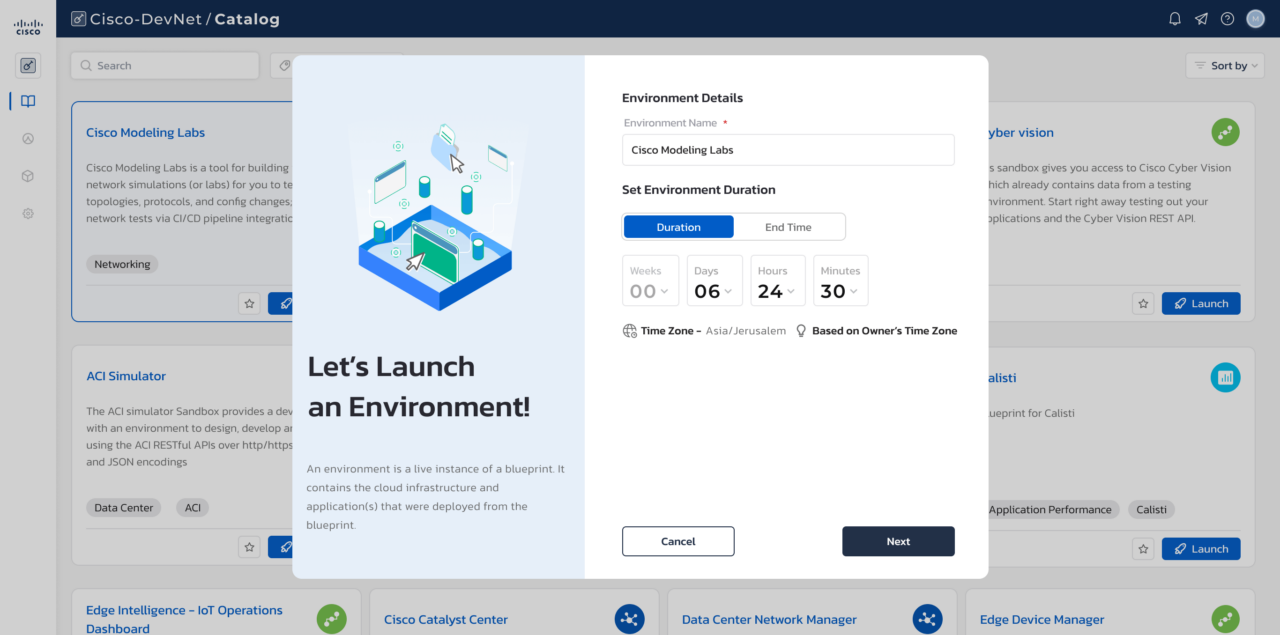
After initiating the launch of a sandbox, users can view all information—instructions on how to use it, logs for all actions initiated, details on infrastructure created to support the sandbox, documentation.
Once live, the developer can access the sandbox and carry out the next steps of the development process.
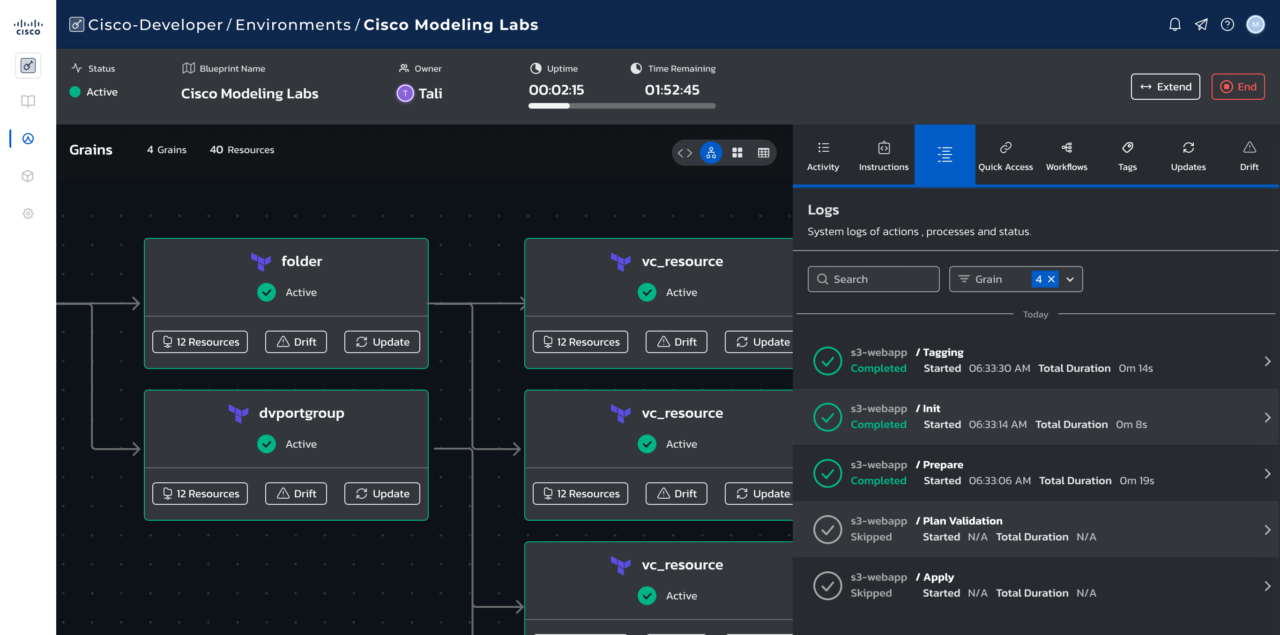
Separate from the self-service catalog, the Environments view in Cisco DevNet Sandboxes provides each user a view into all the sandboxes they’ve launched. If, for example, a user needs to access an environment they’ve run previously, they can return to it easily from this view.
Filters and search tools allow those who run large volumes of sandboxes to sort and find specific sandboxes by status, name, date, and other criteria.
Whether they need a sandbox for the first time or hundredth time, developers can run it on demand in a matter of minutes.
Maintaining & optimizing developer experience at scale
Data is key to the success of any developer platform. Platform teams need to understand how users engage with the platform as well as how the services perform when they’re needed.
For the Cisco DevNet team, performance of sandboxes is a critical concern. If sandboxes do not launch or operate as expected, developers will find other ways to run the infrastructure they need.
To support the Cisco DevNet team, Quali Torque tracks the performance of all sandboxes launched via the self-service portal and flags those with errors, configuration drift, or other unexpected changes that could disrupt performance.
In those instances, the Cisco DevNet team can investigate the source file that defines the sandbox’s infrastructure and deployment plan. Since all sandboxes listed on the self-service portal are based on these definitions, fixing an error in the source file ensures that all deployments thereafter will follow suit.
This continuous monitoring and automation surfaces issues that could deter developer engagement in real-time, enabling the Cisco DevNet team to act on those issues immediately.
Over time, reporting on the usage and performance of sandboxes provides the platform team with valuable data to inform their strategy to maintaining developer experience at scale.
To learn more about how platform engineering teams use Quali Torque, watch a brief product demo.




